
Leasing services company GATX (NYSE:GATX) reported Q3 CY2025 results beating Wall Street’s revenue expectations, with sales up 8.4% year on year to $439.3 million. Its GAAP profit of $2.25 per share was 3.4% below analysts’ consensus estimates.
Is now the time to buy GATX? Find out by accessing our full research report, it’s free for active Edge members.
GATX (GATX) Q3 CY2025 Highlights:
- Revenue: $439.3 million vs analyst estimates of $435.8 million (8.4% year-on-year growth, 0.8% beat)
- EPS (GAAP): $2.25 vs analyst expectations of $2.33 (3.4% miss)
- EPS (GAAP) guidance for the full year is $8.70 at the midpoint, roughly in line with what analysts were expecting
- Operating Margin: 53.9%, up from 31.5% in the same quarter last year
- Active Railcars: 101,288, down 1,409 year on year
- Market Capitalization: $6.16 billion
Company Overview
Originally founded to ship beer, GATX (NYSE:GATX) provides leasing and management services for railcars and other transportation assets globally.
Revenue Growth
A company’s long-term sales performance is one signal of its overall quality. Any business can have short-term success, but a top-tier one grows for years. Over the last five years, GATX grew its sales at a mediocre 7.2% compounded annual growth rate. This fell short of our benchmark for the industrials sector and is a tough starting point for our analysis.
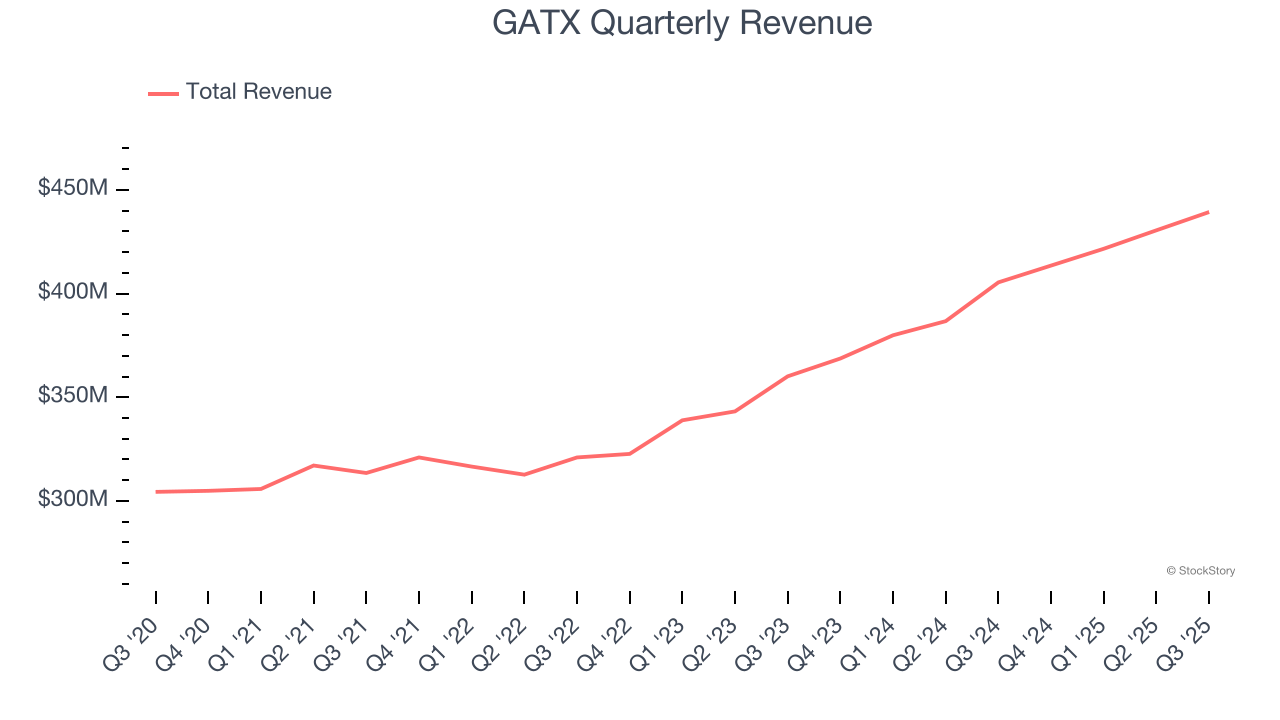
We at StockStory place the most emphasis on long-term growth, but within industrials, a half-decade historical view may miss cycles, industry trends, or a company capitalizing on catalysts such as a new contract win or a successful product line. GATX’s annualized revenue growth of 11.8% over the last two years is above its five-year trend, suggesting its demand recently accelerated. 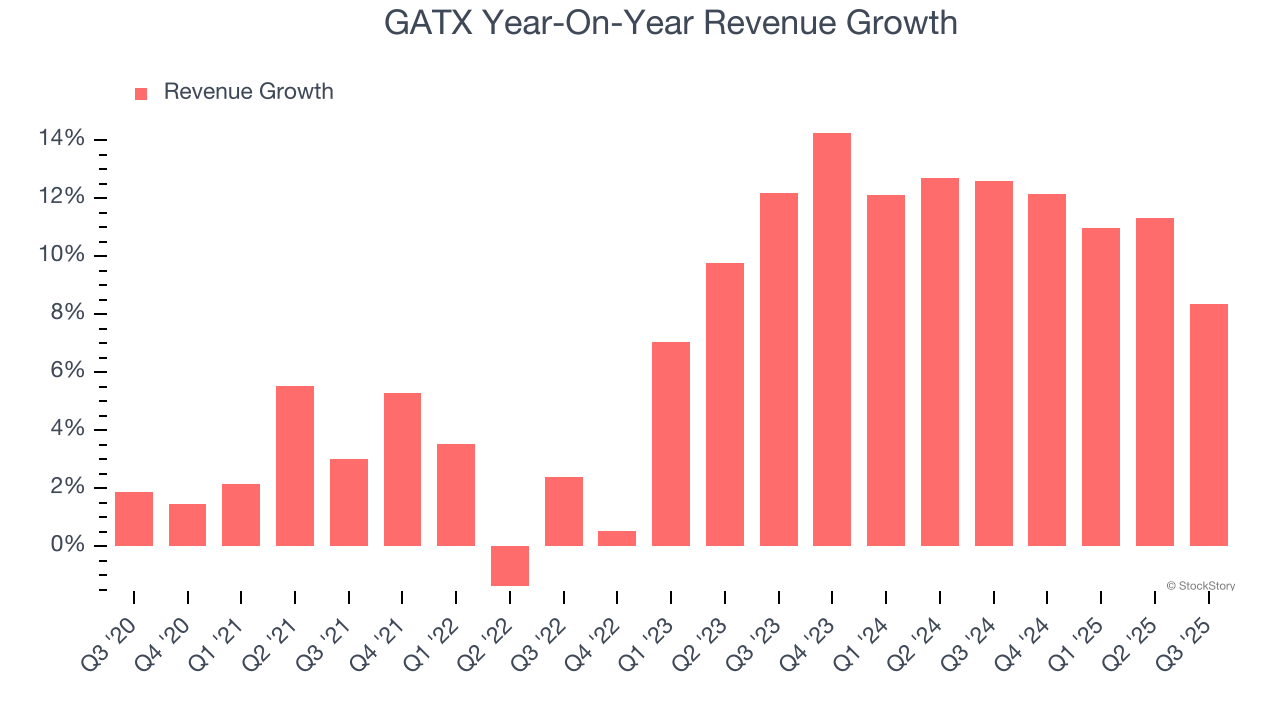
We can better understand the company’s revenue dynamics by analyzing its number of active railcars, which reached 101,288 in the latest quarter. Over the last two years, GATX’s active railcars were flat. Because this number is lower than its revenue growth during the same period, we can see the company’s monetization has risen. 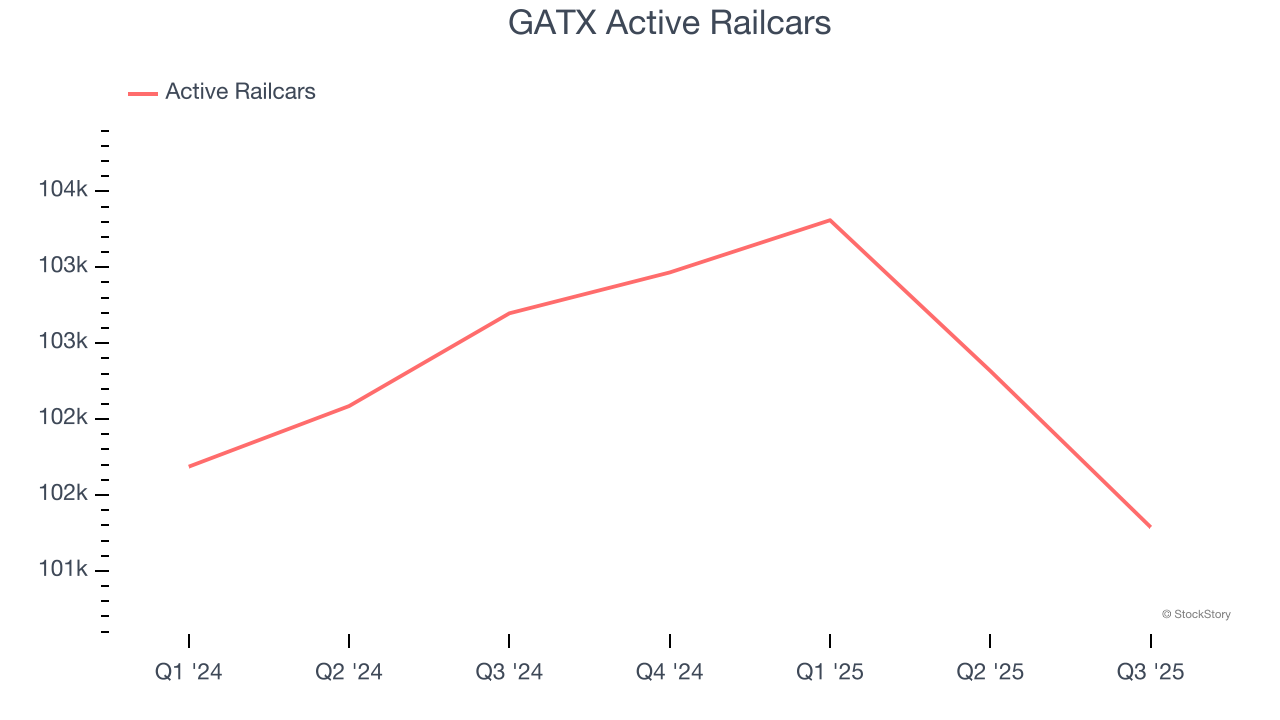
This quarter, GATX reported year-on-year revenue growth of 8.4%, and its $439.3 million of revenue exceeded Wall Street’s estimates by 0.8%.
Looking ahead, sell-side analysts expect revenue to grow 5.5% over the next 12 months, a deceleration versus the last two years. This projection is underwhelming and indicates its products and services will face some demand challenges.
Here at StockStory, we certainly understand the potential of thematic investing. Diverse winners from Microsoft (MSFT) to Alphabet (GOOG), Coca-Cola (KO) to Monster Beverage (MNST) could all have been identified as promising growth stories with a megatrend driving the growth. So, in that spirit, we’ve identified a relatively under-the-radar profitable growth stock benefiting from the rise of AI, available to you FREE via this link.
Operating Margin
Operating margin is a key measure of profitability. Think of it as net income - the bottom line - excluding the impact of taxes and interest on debt, which are less connected to business fundamentals.
GATX has been a well-oiled machine over the last five years. It demonstrated elite profitability for an industrials business, boasting an average operating margin of 29.2%. This result isn’t surprising as its high gross margin gives it a favorable starting point.
Analyzing the trend in its profitability, GATX’s operating margin rose by 13.2 percentage points over the last five years, as its sales growth gave it operating leverage.
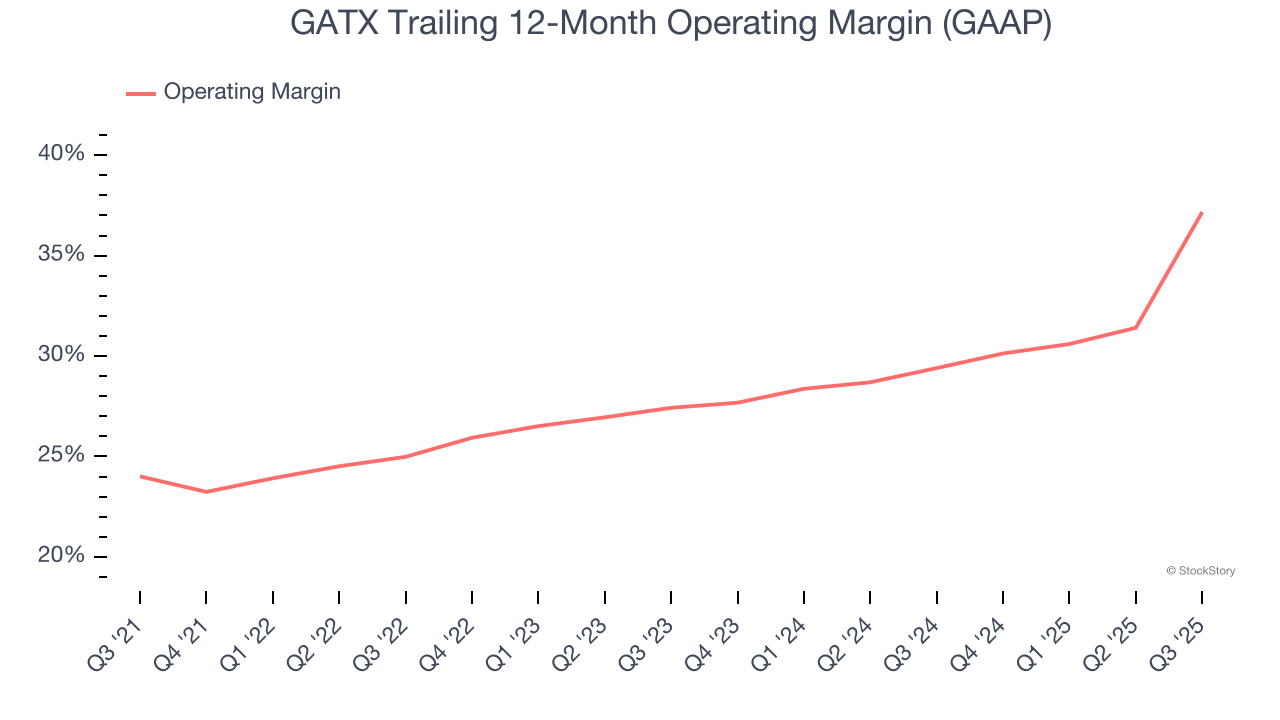
This quarter, GATX generated an operating margin profit margin of 53.9%, up 22.4 percentage points year on year. The increase was solid, and because its gross margin actually decreased, we can assume it was more efficient because its operating expenses like marketing, R&D, and administrative overhead grew slower than its revenue.
Earnings Per Share
Revenue trends explain a company’s historical growth, but the long-term change in earnings per share (EPS) points to the profitability of that growth – for example, a company could inflate its sales through excessive spending on advertising and promotions.
GATX’s EPS grew at a decent 9.8% compounded annual growth rate over the last five years, higher than its 7.2% annualized revenue growth. This tells us the company became more profitable on a per-share basis as it expanded.
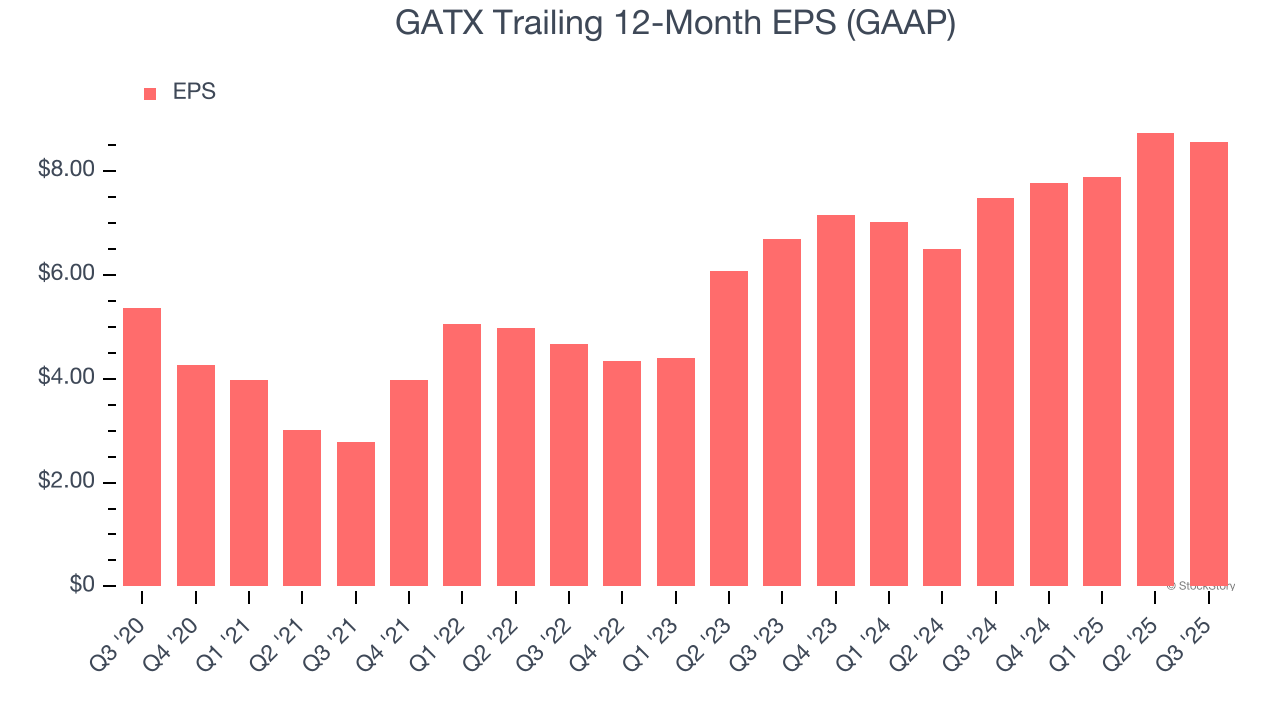
We can take a deeper look into GATX’s earnings to better understand the drivers of its performance. As we mentioned earlier, GATX’s operating margin expanded by 13.2 percentage points over the last five years. This was the most relevant factor (aside from the revenue impact) behind its higher earnings; interest expenses and taxes can also affect EPS but don’t tell us as much about a company’s fundamentals.
Like with revenue, we analyze EPS over a shorter period to see if we are missing a change in the business.
For GATX, its two-year annual EPS growth of 13% was higher than its five-year trend. This acceleration made it one of the faster-growing industrials companies in recent history.
In Q3, GATX reported EPS of $2.25, down from $2.43 in the same quarter last year. This print missed analysts’ estimates, but we care more about long-term EPS growth than short-term movements. Over the next 12 months, Wall Street expects GATX’s full-year EPS of $8.56 to grow 11.2%.
Key Takeaways from GATX’s Q3 Results
We liked that GATX's revenue narrowly outperformed Wall Street’s estimates. On the other hand, its EPS missed and its full-year EPS guidance fell slightly short of Wall Street’s estimates. Zooming out, we think this was a weaker quarter, and the stock traded down 2.4% to $168.85 immediately after reporting.
Is GATX an attractive investment opportunity at the current price? The latest quarter does matter, but not nearly as much as longer-term fundamentals and valuation, when deciding if the stock is a buy. We cover that in our actionable full research report which you can read here, it’s free for active Edge members.
